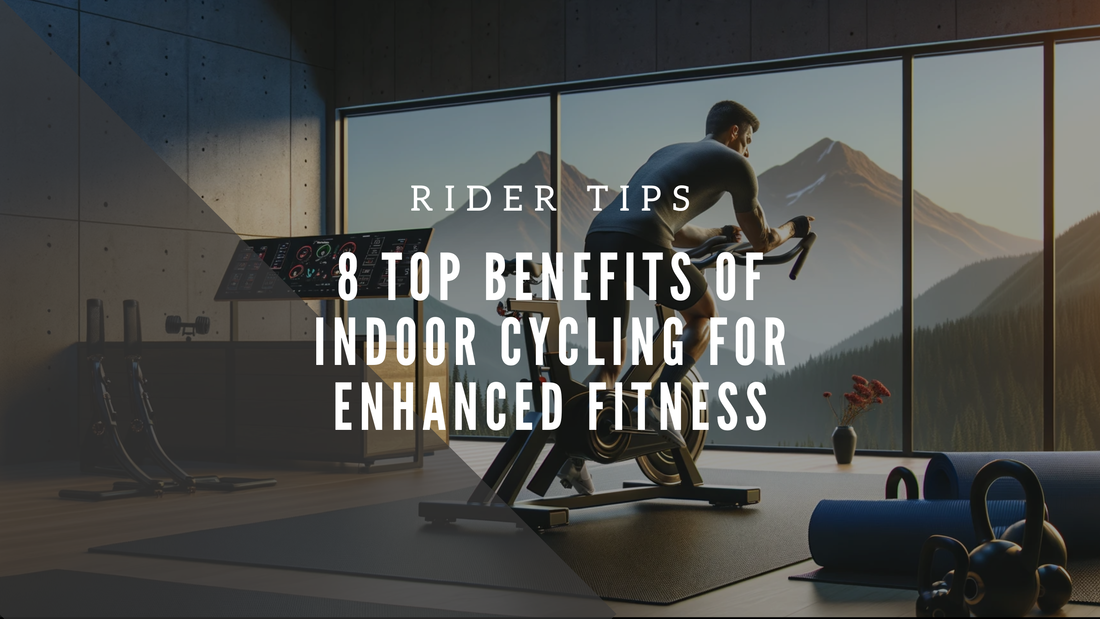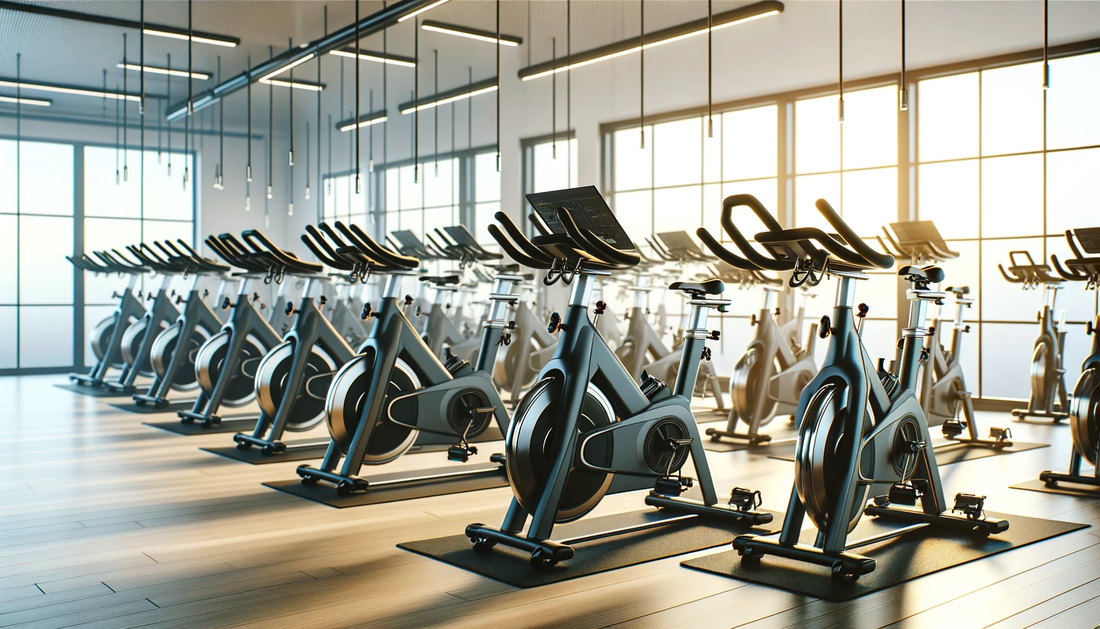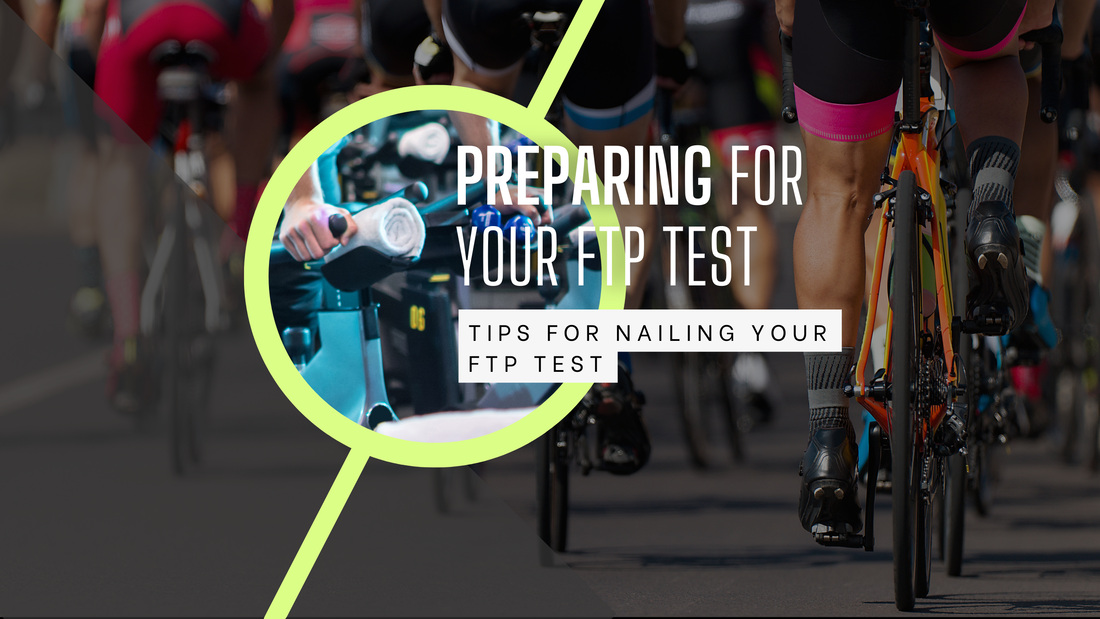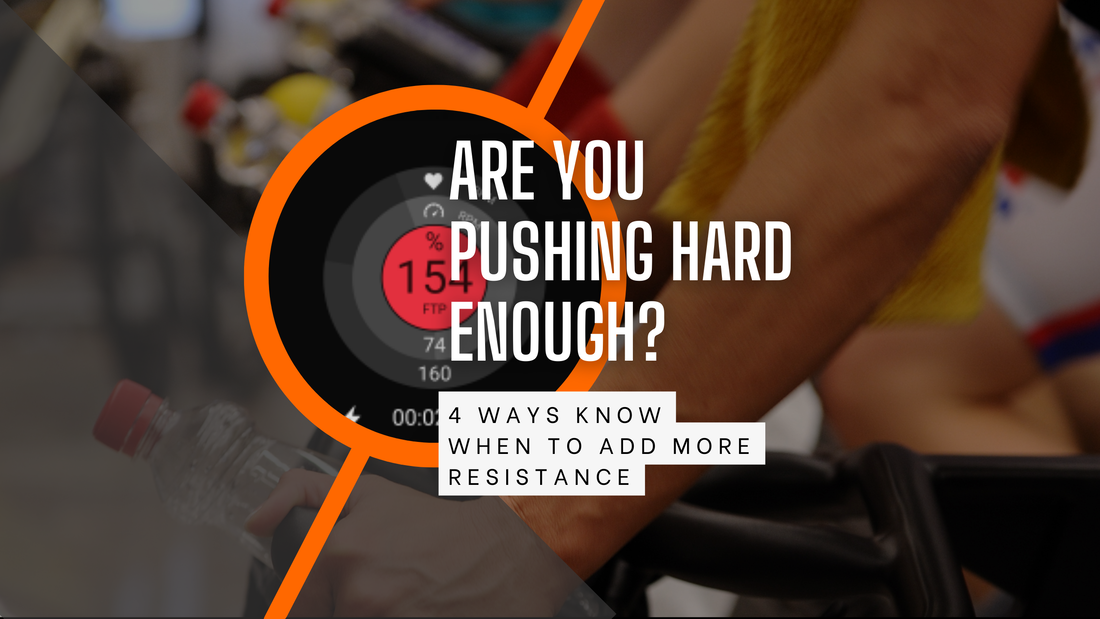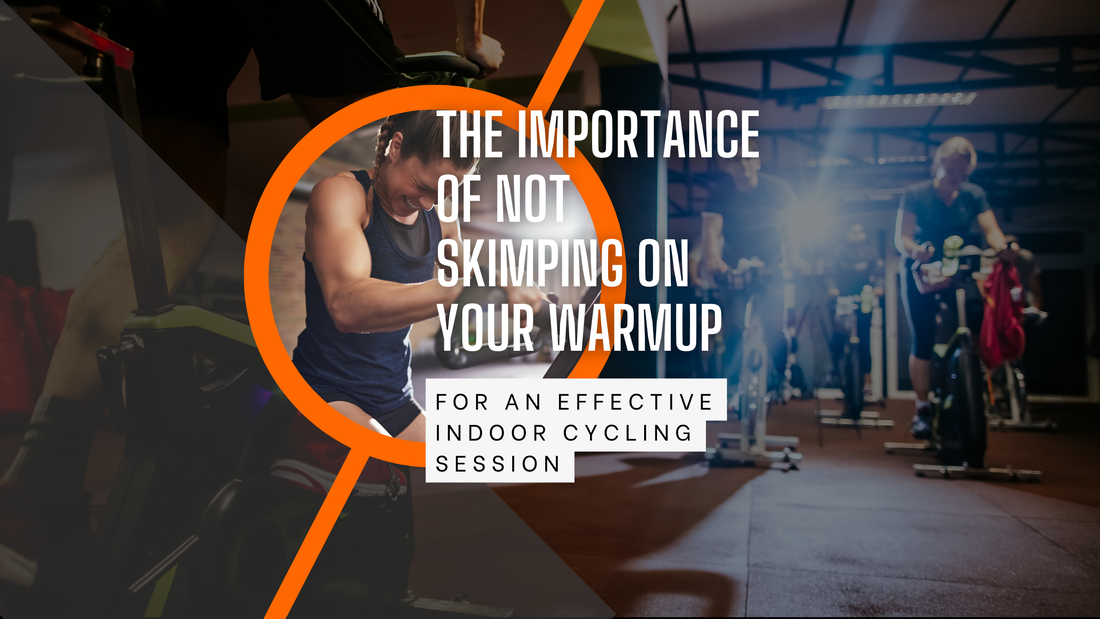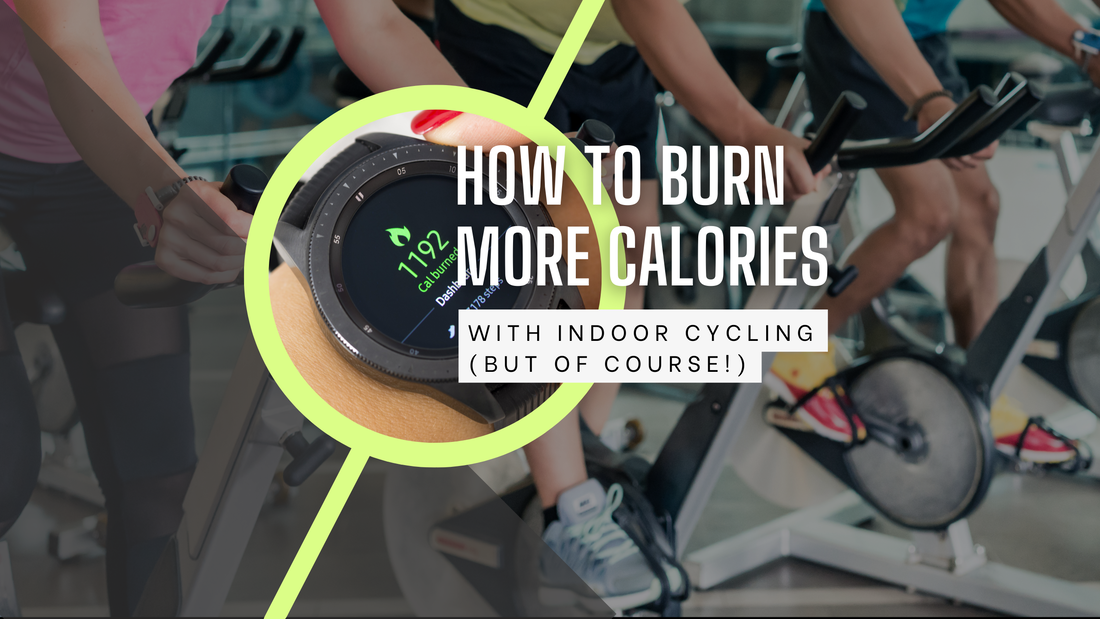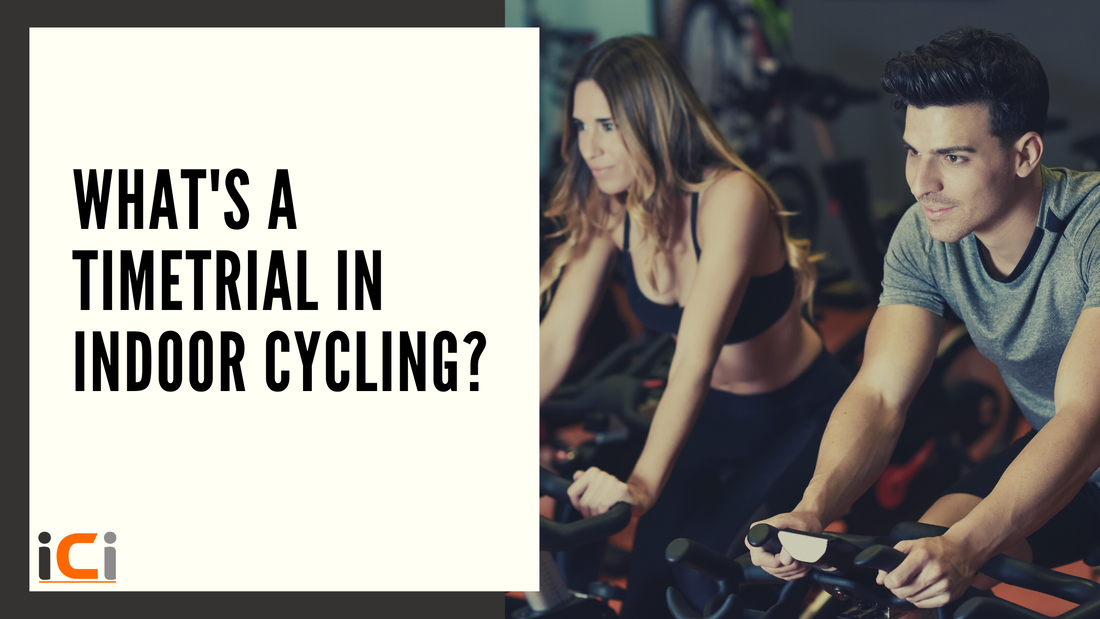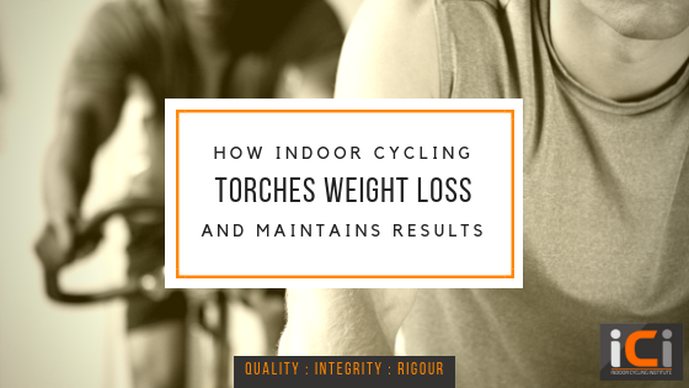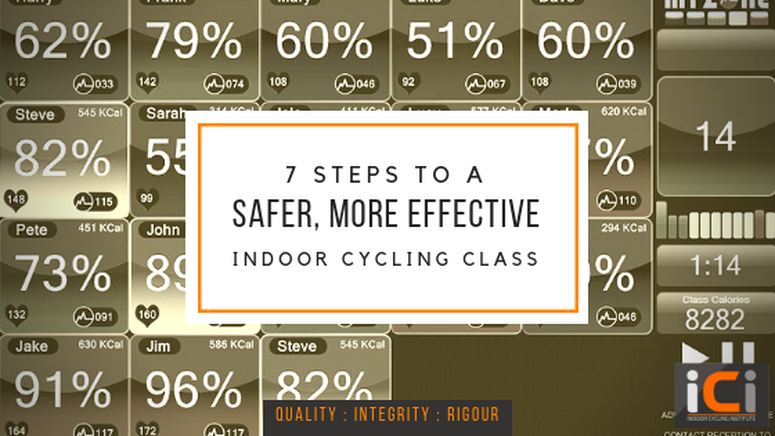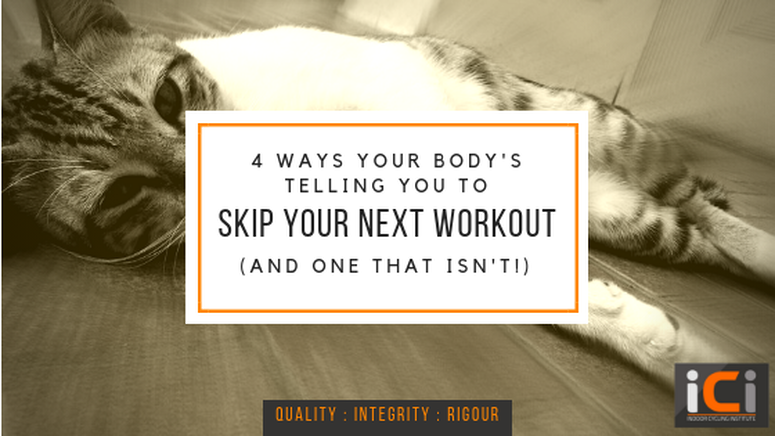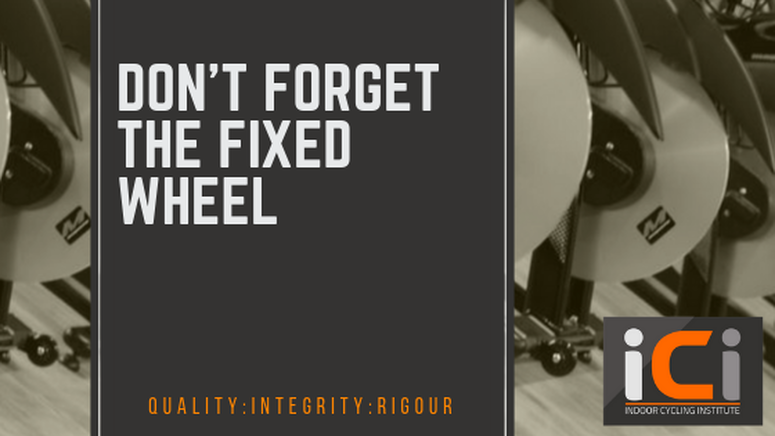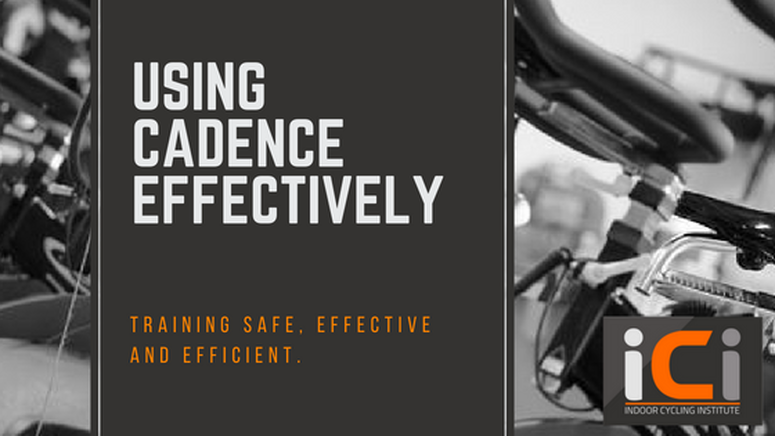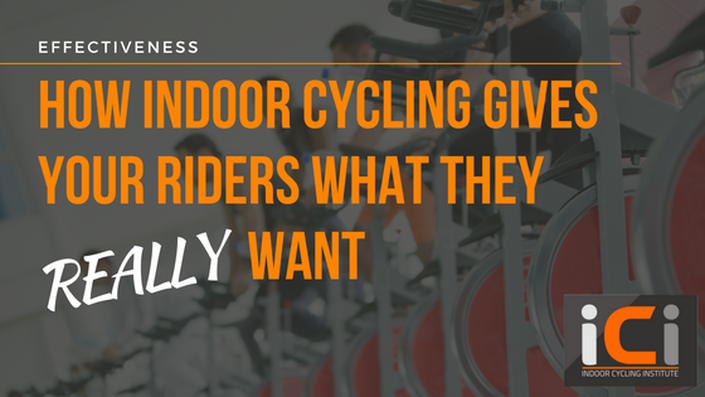|
In recent years, indoor cycling has transcended its niche of hardcore racers braving the winter to maintain their form, blossoming into a widely embraced fitness phenomenon. Thanks to technological leaps, this form of exercise now presents a multitude of benefits to cyclists of all ambitions.
0 Comments
Indoor cycling has revolutionised the way we approach fitness, blending convenience with effectiveness. Whether you're a seasoned cyclist or a fitness enthusiast, the advantages of indoor cycling are too compelling to ignore. In this article, we delve into the key benefits of indoor cycling that make it an indispensable part of any fitness routine.
FTP tests are crucial for establishing accurate training zones, forming the foundation of all training programmes. These tests help determine training zones for heart rate and power output, providing clarity on an individual's training level and intensity for maximum performance. Here are some tips to prepare you for a successful FTP test:
- ICI staff Indoor cycling, is super-effective in getting your heart pumping, muscles working, and calories burning. One of the essentials to a successful indoor cycling workout is finding the right amount of resistance to give you the gains you want. If you're unsure whether you're pushing hard enough, here are some signs that you may need to add more resistance to your indoor cycling routine:
- ICI staff While the focus of indoor cycling is often on the intensity and duration of the session itself, one crucial element that should never be overlooked is the warmup. This is the easiest way to spot the difference between an expert instructor and an ordinary one. Spending the first 10 minutes of your session warming up riders can significantly enhance their performance, reduce the risk of injury, and maximise the benefits of their workout. And why wouldn't any instructor want that?
Warm ups should be properly planned - just 'allowing riders to move their legs' for a few minutes when they arrive prior to the session isn't enough. How do you know how much resistance they have on? How do you know the cadence is effective? You don't. You're also sending a message about your own expertise if you're abdicating responsibility for the warm up to your riders. If they don't know what it's for, they'll assume you don't either. - ICI staff Indoor cycling is an excellent way to lose weight, and it has numerous other benefits. Not only does it help you shed those extra pounds, but it also helps you improve your cardiovascular health, reduce insulin resistance and strengthen your muscles. But how you go about it will determine how much weight you can lose. Here are some factors to consider:
- ICI staff Stationary bicycles, also known as exercise bikes, studio bikes or static bikes, have been a popular piece of fitness kit for decades. They provide a low-impact cardiovascular workout that can be done in the comfort of your own home or at the gym or cycling studio. However, like any fitness equipment, there are advantages and disadvantages to using a static bike.
A time trial is basically a fast flat, but more intense, and has more shape to it:
by Angela Reed-Fox How indoor cycling torches weight loss and maintains resultsEncouragement is vital. Sometimes it's easy to forget why we're doing what we're doing - but as an instructor you can help remind your riders why indoor cycling is so good for them - and why they've made a great decision to give you their time. Indoor cycling boosts your metabolismYes it does. A slow metabolism means you'll burn calories slower and store more as fat. No one wants that. (Unless you're a polar bear.) A fast metabolism on the other hand essentially means you can get away with more - a cheeky glass of wine does a lot less damage to a fast metabolism than a slow one. So, how does indoor cycling speed up metabolism? Because we use resistance, it means we're challenging the large muscles groups in the bottom and legs (glutes, hamstrings and quads) and in that recovery after your challenging indoor cycling session (see, recovery is important!) your body will repair and strengthen that muscle tissue, and the more of it you have, the more the demand for fuel. Which means your metabolism speeds up, and you don't store so much energy as fat. Complicated? It's actually more complicated than that... What does this mean? It means you need to enjoy a really good session, and then take the time to relax and allow your muscles to recover in between sessions for best results. Indoor cycling is a mega fat-burnerWell spotted - you'll not be storing as much energy as fat in the first place, but also you'll be burning more fat as you go along with indoor cycling. This is because our sessions are carefully designed for effectiveness - we use heartrate zones so that each workout is tailored to you, and to promote the hyper fat-burning effect of indoor cycling. What do you need to do? Follow your instructor's direction and maintain the correct heartrate zone (in some cases this may be lower than you expected). Indoor cycling is focusedYou know all that stuff your instructor is telling you about technique? Is not so they can fill an awkward silence. Applying proper technique means your workout becomes even more effective as you're challenging your muscles further rather than relying on your bodyweight to turn the pedals, burning more fat and boosting your metabolism. If you ride out on the road, you'll notice a difference if you've used your indoor cycling sessions to focus on technique as you'll be stronger up the hills, faster on the flat, and you'll be the one getting to the cafe first. Indoor cycling is low impactIndoor cycling's low impact nature protects the joints while still providing an excellent workout. Low impact means you can enjoy it, without worrying about the wear and tear on your joints. And if you do have joint problems stopping you from high impact stuff like running, you'll find that not only are your joints protected by the cycling movement, but also, because of the resistance, you'll be strengthening the muscles around the joints, and reducing the risk of problems in the future. That means you can do more of it - and get even better results! Indoor cycling is progressiveThat means it gets harder as you get fitter. There's always more resistance to add, and that recovery rate of yours - well it'll get faster, and you'll need to work harder to keep your heartrate up. Doesn't matter how incredibly fit and amazing you get - your workout will always be as hard as you make it. Indoor cycling instructor? Click below for free CPD resources. Your venue can also receive information on how we can help improve customer registration, retention, engagement and profitability.
by Angela Reed-Fox 7 steps to a safer, more effective indoor cycling classYou'd think that'd be so easy everyone would be doing it, right? Well when we recently updated our entry level 2 day indoor cycling instructor course, we include a bit on litigation (because if you need your insurance, you're too late!) and as part of this we research court cases being brought against cycling studios and gyms, and we look for patterns in the reasons for the litigation, and who is being blamed. In more than 95% of recent cases (in the last five years) it's due to instructor error - instructors have either given poor instruction or have had riders doing unsafe moves. Incidentally the remaining 5% of cases is due to either the studio being too dark for riders to see what they're doing, or equipment being poorly maintained or with sharp prominences. What does this mean for you as an indoor cycling instructor? It means that there's a lot you can do to reduce the risk of injury for your riders, and litigation both for yourself and your venue. Here's how: Injury check There are three points at which each rider should be asked about injuries, health issues or concerns:
Bike setup All new riders need a bike setup - this is the perfect opportunity to answer any questions they have and help them feel comfortable. A suitable bike setup will reduce aches and improve comfort. Riders will be able to ride more efficiently, using more of the larger muscle groups as they pedal. This improves the calorie burn and the training effect. Consider jotting your riders' bike settings on record cards which they can refer to at their next session and have a go at setting themselves up. Think about data protection though and make sure you destroy old cards. Clear instruction In the interests of safety and effectiveness, this is essential. Riders need to know what you're asking them to do, as well as how. For a bonus point, you can also tell them why it's good for them! There are five main points you'll need to give them for each challenge:
Be kind, and don't forget to cue them in and cue them out. Safe cadence Cadence is a biggie when it comes to rider injuries. Safe cadence also requires safe resistance. What we need to particularly guard against is crazy high cadence with insufficient resistance . Not only is this totally ineffective, but it increases the risk of the rider losing control of the pedals. (Remember, the bike has a fixed wheel.) So, stick to a safe cadence range. We don't recommend going lower than 60rpm. Obviously it's possible to pedal slower than this, but what tends to happen at this point is that riders either don't have sufficient resistance to be pedalling effectively, or they have so much on they're unable to pedal any faster and are overloading their joints. We don't recommend going higher than 120rpm. But in fact, when we're instructing, we tend to encourage riders to add more resistance if they're reaching 120rpm, which will then bring their cadence down. Yes, it's possible to pedal that fast with riders who are experienced and have good coordination. However, you'll frequently see terrible technique starting to creep in when you reach this point, which decreases effectiveness, so I'd recommend avoiding going past this point with any riders, however experienced. Always give a cadence guide and let riders know how it should feel as well. Bouncing bottoms in the saddle are a dead giveaway - as are bikes that start squeaking when they're being pedalled fast with no resistance! It's OK to say "If I can hear your bike, you need to add on!" Avoid banned moves We have a list of banned moves. We strongly recommend that venues do this too, either by using ours or creating their own. We ban a move either because it's ineffective and therefore pointless, or because it's downright dangerous. Examples include:
Measurable progress How do riders know they're getting fitter? Remember that a lot of your riders are not in your class purely for enjoyment - they want and need results. What will you do? We recommend using power training so they can see measurable results. If we go by how we feel, this is too subjective and we'll get demotivated quickly. On the other hand, if we can point to actual quantifiable improvements, we're more likely to stay motivated as we can see our effort paying off. Ask us about our power training courses. Heartrate training Using heartrate training in classes is safer. Riders can get to know better how their bodies respond to activity, they know when they need to take it easier than usual, and when they can start pushing harder. They'll be able to detect when they might be overtraining, and they'll be able to stay within safe parameters as each session becomes tailored to them. Not only all this, but we've spotted instances of riders having anomalies which after medical investigation showed conditions being diagnosed such as atrial fibrillation and also blockages of arteries which led to surgery. So there we go - seven ways you can make your classes safer and more effective. Want help or advice on instructor practice or MyZone heartrate training? Get in touch - we're here to help you. Indoor cycling instructor? Click below for free CPD resources. Your venue can also receive information on how we can help improve customer registration, retention, engagement and profitability.
by Angela Reed-Fox 4 ways your body's telling you to skip your next indoor cycling workoutLet's start with the one that isn't! If your rider's behind is a bit sore, it's not time to skip the workout It's not unusual for rookie riders to feel a bit 'tender' after their first (or second) indoor cycling session. Although it doesn't happen to everyone, it is normal, and you can reassure riders of this. What's the best thing to do? It's best not to wait until the ache has gone before getting back on the bike. Give it 48 hours and then get back on - remember when you started out? It didn't take long for you to get used to it, and not to feel any discomfort at all. This is reassuring for new riders to hear - and also that the best thing is to come back in a couple of days and do another workout. Advise a padded seat cover or padded shorts if desired - but not both as this can compound the problem. Muscle soreness - when's it too much? The whole point of a workout is that we get results, get fitter, burn fat, and have a good time. Smashing your riders to bits just isn't necessary (and is likely to be counterproductive, leading to increased risk of injury and overtraining - with diminishing returns as you'd be overworking already tired muscles). Recovery is an underrated and often ignored part of the workout - but it's essential. Your body needs time to repair and replenish muscles - if you don't give your body time to do this, you won't see the results you've worked for. Going back too soon after a challenging and intense workout is out then. How do you know when 'today' is too soon? 1. Struggling to mobilise If you struggle to bounce out of bed as you usually do, or if climbing stairs, or sitting on the loo is considerably more of a challenge than normal, you need to rest your muscles. You don't need to be completely immobile, some gentle dynamic stretching or light exercise of unaffected muscles is absolutely fine. If you're feeling it in your quads, then you can still do some work with your upper body if you need to, or go for a steady walk on the flat just to keep yourself moving. 2. No better after exercise If you tried the gentle exercise tack, and you're still in discomfort - you'll need to take it steadier for a bit longer. If you're still within the 48 hours after your tough workout, it's likely you just need to rest for a bit longer. After 48 hours the discomfort improve. If it hasn't improved after 48 hours, you should seek medical attention - because that's not right! 3. "Weird" pain If the pain is in one particular part of the muscle, you may have an injury. Rest, recuperate, and see how you are the next day. Generalised discomfort throughout the whole muscle or group of muscles is normal, a particular point of pain isn't. If you need pain relief to cope with it, you'll need time to recover. Bear in mind though that ibuprofen and Deep Heat only masks the pain, it doesn't take away the cause of the pain. As with the point above, if it doesn't get better, seek medical advice. 4. If you have swollen muscles and your urine is a lot darker than usual Yep, in the rare event that this happens, you'll need to see a doctor and provide a urine sample. Swollen, painful muscles and strangely dark urine are both symptoms of rhabdomyolysis - this occurs when the body starts breaking down muscle tissue and releases creatine kinase and myoglobin into the blood stream. These large protein molecules can cause kidney damage (hence the funny wee). This condition can happen as a result of 'crush' injuries as well as overly intense workouts with less than adequate instruction/supervision. If you think this is you, seek medical attention immediately. (It's rare, but as an indoor cycling instructor, you need to know that this is a possibility - and has happened. Keep yourself up to date with CPD and ensure you're always keeping your sessions safe and effective.) Indoor cycling instructor? Click below for free CPD resources. Your venue can also receive information on how we can help improve customer registration, retention, engagement and profitability.
by Angela Reed-Fox Indoor Cycling Instructor tips - fixed wheelWhat? The way the stationary bike works is by a fixed wheel, which essentially means that when the pedals are turning so does the flywheel. Conversely, if the flywheel is turning, so will the pedals. And this right here is the crux of why it's important that instructors understand the implications, but also that they tell riders what they need to know in order to stay safe. There are several instances every year of cycling studios and their instructors being sued because of injuries occurring during an indoor cycling session. We've had a look through what the causes are - and I'd say over 95% of them were completely avoidable and due to either a lack of knowledge on the instructor's part, or poor instructing (twp reasons why the Indoor Cycling Institute exists). And the rest? Really weird stuff that happens when you store hand-held weights on the back of the bike or dark studios where people can't see what's going on, that type of thing. What you need to tell your riders
What you need to concentrate on during your class Warming up
The warming up pace should be leisurely, but riders should be in control of the pedals and feel the bike's resistance as they go. At all times,coach riders with how the resistance should feel (especially if the bikes have no metrics). Sprinting Most injuries (and litigation) occur as a result of a rider sprinting incorrectly. Make sure you coch correct resistance, technique and cadence. Click here for more about sprinting. Climbing by Angela Reed-Fox Safe and effective sprinting in indoor cyclingThe one indoor cycling manoeuvre which causes the most injuries (and litigation) appears to be 'sprinting'. But effective sprinting is safe - what we've found it that sprinting is frequently coached wrongly or badly, putting riders at risk of injury. What sprinting is not Sprinting is not having riders pedalling as fast as they can. We've seen examples of instructors asking riders to match an unsafe foot speed (regardless of the ability, fitness, and coordination of the rider), getting riders to compete against each other to see who can go the furthest (using the bike's distance metric) or having riders competing to pedal the fastest. The above practices (and others) promote riders pedalling with insufficient resistance; with the fixed flywheel construction of the stationary bike, this means they are more likely to lose control of the bike, putting them at risk of horrible injury. What sprinting is
What happens as Sagan decides to attack? 1. He adds on gears This is similar to us adding on resistance - but on a road bike, when you add gears, it means every push of the pedal will get your nearer to the finish line. Instantly he's making it harder to pedal. 2. He positions himself Moving his seat closer to the nose of the saddle, he's shifting his weight forward on the bike. This means he can power down on the pedals more efficiently because he's shifting further ahead of the crankarms which means he can recruit more power from those big muscle groups. 3. He picks up the pace Then he's ready to fire. Added to the steps he's already taken, when he increases the cadence and fires forward. What does that mean for you instructing a sprint? First of all, it means there's a definite order. Although Greipel employed these steps in a second, he'd be adding cadence onto resistance, not the other way round. For him, that would mean he's wasting energy with a faster cadence at a lower resistance, but in the studio where we have a fixed wheel setup and no actual finish line, it's more about safety. We keep our riders safe by always ensuring that they have sufficient resistance for their ability, their level of fitness, and the cadence they're pedalling. Coaching different positions on the bike is great not just for seasoned veterans, but also for new riders who will welcome their bodyweight being shifted to a different part of their undercarriage! We'll be recruiting muscles differently when we shift to a different position. In the clip, Sagan looks like he's pedalling at about 100-110rpm (approx). That's a vast difference from some of the unsafe craziness that occurs in studios. Why doesn't he pedal faster? Because he's pedalling against an immense resistance and he knows his most efficient cadence when sprinting. As a general rule of thumb in the studio, if your rider can manage 120rpm, that rider needs to add resistance. What would happen if Peter Sagan did a dangerous 'studio sprint' in this situation? Well what would happen would be he'd pick up the pace and reduce the resistance (we've seen that happen) so essentially his power output would drop, as his cadence increased. He would be overtaken. His legs would be flapping wildly as he pedals in his 'granny' gear while his opponents would quickly flock past him snatching glory from him well before the finish line. He'd probably lose his place on the team for the next season, and therefore miss out on lots of lucrative sponsorship deals too. See, it's just not worth it! How should you coach the sprint?
by Angela Reed-Fox Enable your indoor cycling riders to recoverYou'll have seen it, the rider a the back of your indoor cycling class who starts looking a bit green. What do you do? Well, in the first place, I'd appreciate the fact that a) you managed to spot it, and b) your venue has enabled you to keep an eye on your riders by not making it too dark in the studio. This state is generally more usually a problem for newer riders who haven't worked out their pacing yet. Also riders who are coming in from elsewhere who have cut their teeth in the 'inevitable death' school of indoor cycling may look a little peaky too. But you'll also get riders who are just not on their usual form and maybe push just that little too hard. So by all means keep an eye on your newbies, but make sure no one else escapes your gimlet gaze either.
by Angela Reed-Fox Using cadence effectively in indoor cyclingTraining with cadence Training with cadence enables you to train for different outcomes. There is a range that is safe and effective – coaching outside this range can put riders at increased risk of injury and render a workout ineffective (or suboptimum at best), even for seasoned cyclists. Within the safe, effective range of 60-110rpm you can pinpoint narrower ranges in order to train to a specific rationale. Defining your challenge Resistance and cadence together will define your challenge. Although indoor cycling is a highly effective way of training for the road, there are necessary departures where indoor cycling is a little different. In the studio, 60-80rpm is the range used for climbing and higher resistance work, and 80-110rpm is a flat road requiring faster work. On the road, you would naturally find a faster cadence to prevent fatigue, in the studio we use different cadence to improve on technique and maximise gains. Most road cyclists train at cadences above 80rpm with a lowr resistance whether climbing or not in order to reduce strain on joints and to reduce fatigue by focusing on slow-twitch muscle fibres. Cadence and technique Coaching technique is essential for all riders – you may sometimes come across riders who are keen to pedal beyond 120rpm; it is very rare to see this done well even (or especially) among those riders accustomed to riding on the road. In a class setting, in order to ensure maximum effectiveness for all riders, it is better to coach within the broad range specified; you can then coach effective technique, and riders can more easily feel the difference when they are riding effectively. Cadence - choosing the right tool for the job Focusing on narrower ranges enables you to keep the class together, and instruct effective challenges. 60-70rpm is a heavy, challenging climb (or ride into a headwind), resistance should be high - at this cadence you are promoting the use of fast twitch muscles and challenges will necessarily be short due to the muscle fibres' limitations. 70-80 provides a steadier 'working' climb. This calls on the slower twitch muscles and is a good cadence for an endurance climb (in or out of the saddle). A slightly higher cadence – 80-90rpm is great for coaching power intervals or for a steadier flat road/timetrial. At this pace it is easier than with the higher cadences to embed good pedalling technique. At 90-100rpm this is optimum timetrialling cadence and many riders find their comfort zone is here. Resistance is lighter than before, and you're heading for endurance. The fastest cadence you're coaching is 100-110rpm. This is more of a sprinting pace. When you instruct a sprint, ensure that riders know to add resistance on rather than just spin the legs. Fast legs with insufficient resistance on a bike with a weighted flywheel does not provide the required biofeedback for neuromuscular conditioning – the road cycling version would be tackling a long flat road in the granny ring; lots of flapping legs, but no distance covered. There's a reason why pro-cyclists don't train like this! Being clear with cadence With a class of riders, necessarily there will be a mix of abilities and levels of fitness even in the more tailored class setups; this makes effective instruction all the more important. You can effectively coach a class while being quite prescriptive with the cadence you expect from riders – you just need to be sure to describe how the appropriate resistance should feel (using positive language, of course!) so that each rider can replicate the challenge you set on their own bike. Only with the very highest cadences in the range will you need to offer other options to very new riders or those requiring special attention. Otherwise, cadence is a great leveller – all riders can tackle it while employing the level of resistance that is right for them. Indoor cycling instructor? Click below for free CPD resources. Your venue can also receive information on how we can help improve customer registration, retention, engagement and profitability.
by Angela Reed-Fox How indoor cycling gives your riders what they really wantRiders need results. They want to burn fat, tone muscle, get those other healthy outcomes - but don't want to sign their life away on a stiff gym regime. So what can you do? Not all forms of exercise, or indeed exercise classes, are created equal. You can dedicate a lot of time to some, and not see results for months - if at all. However, indoor cycling done properly brings a wide variety of benefits: High calorie burn Compared to many other activities, studio cycling gives the best burn - particularly when you teach riders to apply the correct cycling technique. Fat burningPartly due to the high calorie burn during the session, and partly due to the type of activity, riders wil be torching fat like there's no tomorrow. Mix in aerobic work with high-intensity intervals, allowing appropriate recovery will have your riders accomplishing a high fat burn during the session as well as afterwards too. Great for heart health Paying close attention to heart rate zones, and designing your session without neglecting the lower aerobic zones will help to reduce riders' blood pressure and cholesterol levels. Firing up the metabolism Because studio cycling done with the correct technique uses resistance, the large muscles groups such as quads (front of thigh), hamstrings (back of thigh) and glutes (bottom), riders will be toning these muscles - an more muscle tissue means their metabolic rate will increase, meaning they burn more calories at rest. Don't forget to coach proper technique to enable your riders to fully benefit from this. Strengthens the core Again, refining your riders' technique will increase their gains here. By strengthening the core muscles, they'll improve your shape as well as improve posture, decrease likelhood of experiencing back pain, as well as improving stability and balance. Safer workout If your venue uses cardiotraining technology you'll be able to keep a more informed eye on your riders, and in turn, they'll be able to take control of how their workout goes - keeping it safe, yet challenging. Not only that, but the technology has been known to flag up issues which upon medical investigation led to riders receiving life-saving intervention and surgery. Get your venue manager to talk to us about cardiotraining software - we can provide useful advice - and we can supply the software too. Measurable workouts for greater motivation It's so difficult to stay motivated when you can't see the results. Using bikes that track power output, particularly the modern type bikes that have actual numbered gears rather than the older 'twisty knob' technology, riders can see how they're getting stronger, and push themselves to the next level. Also, cardiotraining is great for motivating riders. We really like the MyZone heartrate belts - riders can earn points for every minute they spend in the active heartrate zones. This is a great feature for keeping riders on track and promoting a bit of healthy competition, as well as being able to track real improvements. Go at your own pace and intensity Combining the cardiotraining technology and providing plenty of options for those who need it, you'll be able to give a great workout at every level. We strongly recommend venues offer different sessions with differing levels of intensity in order to increase the effectiveness of each class. While it is true that any rider should be able to go to any class and get something from it, it is also true that a focused class will bring far superior results. Offer different classes, and offer options in each one. Best of both. Low impact There are many reasons why riders might not want to add impact to their joints - and studio cycling is low impact. They'll be getting a great resistance and cardiovascular workout, but without pounding your joints. Less injury, more results. (just keep an eye on technique for extra effectiveness.) Get done and dusted quicker Studio cycling is efficient exercise. Because of this, your riders will get results faster, and therefore not need to spend so much time exercising (even though it's fun) - so they can spend more time doing other things. Make sure you plan your sessions effectively, have a rationale for each feature you add (or don't add!) and when you're managing your class, remember to coach technique for added effectiveness.
|
Categories
All
|
- Home
- Courses
-
Course dates
- UK indoor cycling instructor training >
- Canada Indoor cycling instructor training
- US Indoor cycling instructor training
- Australia Indoor cycling instructor training
- New Zealand Indoor cycling instructor training
- Europe Indoor cycling instructor training
- Denmark Indoor cycling instructor training
- Norway Indoor cycling instructor training
- Contact
- Shop
- Code of Conduct
- Terms and conditions
Quick links
Get started
|
Find what's right for you
|
Courses
|
Further learning
|
More
|
The Indoor Cycling Institute provides the most comprehensive and up to date indoor cycling instructor training; providing entry-level courses, and further education to raise the standard of instructors.
© 2014-2024 Protheorem Ltd
The Indoor Cycling Institute is owned and operated by Protheorem Ltd Registered in England & Wales, Company number 12812092
The Indoor Cycling Institute is owned and operated by Protheorem Ltd Registered in England & Wales, Company number 12812092

